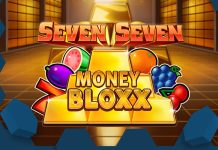Casino homepages range from familiar, tried-and-tested themes, such as fishing, fruits, sweets, ancient Egypt and Irish luck, to more innovative, outside-the-box designs. While traditional aesthetics continue to be top performers, some of the biggest breakout hits of the past year have broken the mould with bold and visually striking designs.
In the concluding edition of a recent two-part roundtable, Johannes Polbring, Product Owner at Thunderkick, Marcin Trafiałek, Promo Tools Specialist at Wazdan, Kajal Verma, Chief Creative Officer at Push Gaming, Amy Brewis, Account Manager at Realistic Games, Javier Sacristán Franco, International Business Director at R Franco Digital, Ivan Kravchuk, CEO at Evoplay, and Iryna Dragulina, Game Tribe Leader at Playson, continue the conversation.
CasinoBeats: Does a recognisable theme have a better chance of becoming an instant hit, compared to an original concept that might require more time to gain traction?

Johannes Polbring: Games with recognisable themes have an instant head-start due to pre-existing player preferences and established fanbases. For example, our recently released Eager Beavers has a familiar and whimsical animal theme, allowing it to gain instant traction with a certain type of player. It is more difficult for players to align with an unconventional theme, such as Thunderkick’s anarchistic Xterminate.
However, as highlighted in Xterminate, if these unique themes are coupled with state-of-the-art design and fast-paced, engaging gameplay, they can gain traction and generate a cult following of players who are then more likely to try new genres in the future.
Marcin Trafiałek: A recognisable theme has a better chance in the market due to a larger potential audience it can reach. However, it is still just one component of a product’s success. Basing a game 100% on its theme will never be the key to creating a hit.
A certain large company creating video games about assassins moves its games from setting to setting, introducing very few mechanical changes and maintaining storytelling at a very low level. The player community’s reception to this can vary but is rare.
This example highlights that whether a game has a chance of becoming a hit depends more on who produces it than on the theme itself. And I emphasise chance because the product still has to prove itself in the end.

Kajal Verma: In my opinion there is less risk involved when you rely on a recognisable theme but that is not to say it will be a bigger hit over an original idea. Our most successful games often balance these two elements, using familiarity to pique the interest of players while offering innovative experiences to sustain their gameplay sessions.
For example, Jammin Jars uses a classic fruit theme which draws on familiarity but coupled with disco Jam Jars, we subverted expectations and added an innovative twist. If you get the balance right you can have an instant hit.
Amy Brewis: A recognisable theme often has a better chance of becoming an instant hit because it feels familiar and may remind players of similar games where they’ve enjoyed a positive experience. This familiarity reduces the perceived risk of trying something new and can quickly draw players in. However, while recognisable themes attract players initially, it’s the mechanics present within a title and the user experience that keep them engaged.
An original concept might take longer to gain traction due to unfamiliarity, but it has the potential to stand out and appeal to players seeking something different. Balancing familiar themes with innovative features can help capture both immediate and long-term interest.

Javier Sacristán Franco: While a recognisable theme can boost a game’s visibility, it doesn’t always guarantee an instant hit. Familiar themes may attract an initial audience due to their built-in appeal, but in today’s fast-paced digital world, original concepts can gain traction just as quickly.
In fact, many players actively seek out novel experiences, and a creative, well-executed game with strong visuals or compelling gameplay can generate significant buzz. So, while a recognisable theme may enhance early sales, the quality, innovation, and marketing of a game are equally crucial to its potential for immediate success.
Ivan Kravchuk: On the surface, recognisable themes might seem more likely to become instant hits, as classic slots with familiar elements still tend to be more popular. New and innovative themes can quickly become hits, sometimes even more so than traditional ones.

However, they also come with a higher risk of failure. So, while recognisable themes might not always go viral, they tend to resonate on a deeper level, offering a better chance for sustained success over time.
Iryna Dragulina: To secure an instant hit, a complex approach to game development is required with theme focus, albeit crucial, still just one element of the creative process. Recognisable themes have the potential to resonate on a broader scale due to catchy elements or recognisable characters and symbols, but if the game lacks win potential and storytelling, it will not captivate its player base.
At Playson, we always ask ourselves what our players will be expecting from the game, how we can create an unforgettable experience for them and how can we gain their trust in the product.
CB: In a competitive market where certain themes are ubiquitous, what can make a familiar theme feel fresh and appealing to players?

KV: In a crowded market where certain themes are overly familiar, game designers must find ways to rejuvenate themes while retaining their core appeal. This can be obtained through various methods such as mashing up established genres, combining elements from different familiar themes to create something entirely new. For example, mixing pirate and futuristic sci-fi elements or fusing a detective theme with steampunk aesthetics. These combinations can reinvigorate familiar themes and surprise players.
Additionally evolving the art style used in creating titles aids in updating overall visuals making a familiar theme feel fresh. For instance, shifting from traditional art styles to more stylized, hyper-realistic, or even cartoonish versions of a known theme can breathe new life into the experience.
MT: Mechanics, quality, and trust in the developer. If a player knows they won’t be disappointed, and that their expectations will be met, then the theme itself becomes secondary.
ID: To refresh a familiar theme effectively, introducing subtle changes that pay testament to the original whilst adding new twists is essential. When working with characters that resonate strongly with your player base and themes that have become popular, sequels are an optimum way to retain demand. Experimenting with art styles and graphics can bring fresh perspective without alienating a player base.
Our upcoming release 3 Pirate Barrells: Hold and Win has been designed meticulously to ensure it is a memorable addition to our renowned ‘3 Pots’ collection. An example of how gameplay has been elevated is through the bonus game where new features have been incorporated to keep players engaged and captivated by unfamiliar experiences posing the potential for high returns.

AB: In a competitive market where certain themes are common, creativity is key to making a familiar theme feel fresh and appealing. This involves reimagining established aesthetics by adding new elements that captivate players quickly, ensuring that the theme and features work together harmoniously. Enhancing the player’s experience with innovative gameplay mechanics, visual effects, or unique storytelling can revitalise well-known themes.
It’s also important to immerse the player from the start, blending established elements with unexpected twists. By balancing innovation and familiarity, a game can stand out even in a crowded market, offering something comforting yet exciting to players.
CB: Conversely, how can suppliers ensure a game with an unconventional theme attracts players?
JP: Optimised marketing can be pivotal in communicating the narrative of a game with potential players. Social media campaigns are particularly important in reaching the target audience, giving them early access to game information and trailers to build anticipation.
It goes without saying that gameplay is equally crucial to a game’s success. A player might load up the slot for the theme, but if gameplay is substandard, game sessions are likely to be short. Attracting an individual to a slot is the first step. Gameplay and mechanics must then deliver anticipation and immersion, and it is this experience that will keep them returning for more.

IK: To ensure a game with an unconventional theme attracts players, two key factors come into play. Firstly, the game itself must be straightforward and easy to understand. Secondly, effective presentation is crucial, involving impactful marketing campaigns and promotional tools to capture interest and boost player engagement.
Our internal data shows that tools like tournaments and quests are particularly effective. To sustain player interest and drive engagement, creating just a few promotional tools isn’t sufficient, so our team continually develops new ones. For instance, Evoplay’s recent introduction of the Wheel of Fortune looks promising and is expected to further enhance player participation. By focusing on both game quality and innovative marketing, we aim to maximise player attraction and involvement.
JS: While there’s no guaranteed formula for success, suppliers can significantly increase the chances of an unconventional theme attracting players by taking a strategic approach. The first step is to clearly define the target audience, ensuring the theme aligns with their preferences and interests. From there, A/B testing, player surveys, and behaviour analysis are invaluable tools for gauging audience reactions and refining the game’s appeal.















